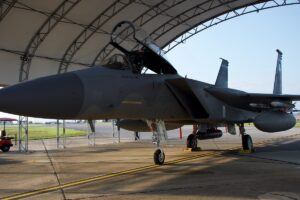
The fiscal 2022 defense authorization conference bill largely accedes to the U.S. Air Force request to retire 201 aircraft with some conditions and a prohibition on retiring A-10 Warthog close air support planes. The proposed Air Force fiscal 2022 aircraft divestments, including the retirements of 48 Boeing [BA] F-15C/Ds, 42 A-10s, 18 KC-135s, 14 KC-10s, 47 Lockheed Martin [LMT] F-16C/Ds and eight C-130Hs, 20 Northrop Grumman [NOC] Block 30 RQ-4 Global Hawk drones and four Joint STARS aircraft, would save nearly $1.4 billion, the Air…














